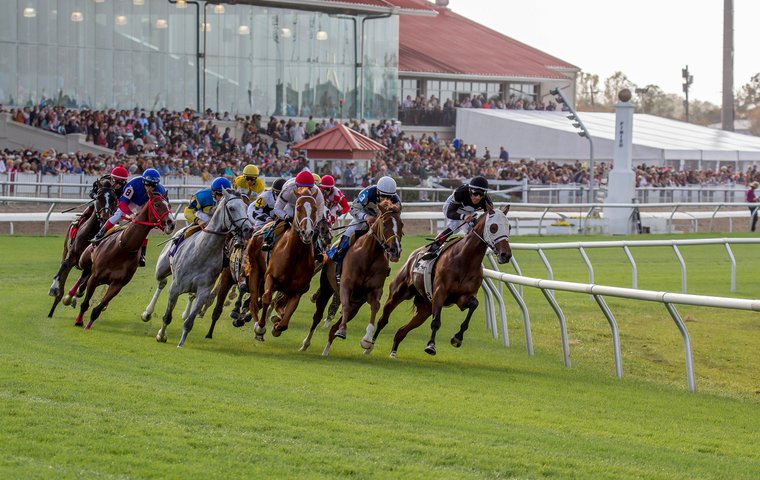
If a picture says a thousand words, put racetrack photographer Lou Hodges down for a few million. And that’s just winner’s circle photos.
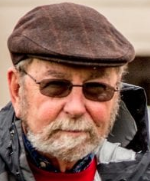 If a picture says a thousand words, put racetrack photographer Lou Hodges (left) down for a few million. And that’s just winner’s circle photos.
If a picture says a thousand words, put racetrack photographer Lou Hodges (left) down for a few million. And that’s just winner’s circle photos.
Hodges has been the track photographer at the Fair Grounds in New Orleans in Louisiana, USA, since 1976. So how many photographs in the winners’ circle alone has he shot?
“I’d have to sit down and do the math — 80- to 100-day race meets and for 46 years,” he said. And that’s race days for only one meet. He shoots the winter meet at the Fair Grounds from Thanksgiving through March and then shoots at Louisiana Downs in Bossier City from May through September. Before that, his summer meet schedule was at Arlington Park and the old Washington Park in Chicago in the summer.
To save you the math – two 80-day racing meets in a year, eight races a day - would mean Hodges has shot over 58,000 winner’s circle photos. For two 100-day meets, that’s over 92,000 photos.
Incredibly, that doesn’t account for another 27 years of Hodges’ photography career. It began in 1948 assisting his dad, Louis Hodges Sr, his predecessor as track photographer at the Fair Grounds, and at a very young age.
“As early as 12 years old, I came out and shot pictures. I remember going around the first turn and I was behind the fence and I snapped a crowd shot that my father used. I wish I still had that picture.”
The Fair Grounds in the life of the Hodges family goes back even further. Hodges’ grandfather, Samuel, an Irish immigrant to the Big Easy, was a Fair Grounds habitue in the 1930s and father to three sons, one of whom, Samuel Junior, ‘Sammy’, was a jockey at the Fair Grounds.
“You know how the Irish love horses,” said Lou Hodges of his grandfather, who wanted at least one of his sons to become a jockey.
“My father wasn’t interested at all,” but, according to Hodges, “my grandfather would drag him out here and he’d bring a book”, maybe taking interest in racing long enough to watch his brother.
The seed for a career as a track photographer for Hodges’ dad was World War II and service in the Army Air Corps, where he learned how to use a camera. Returning home to New Orleans, connections and friendships made at the racetrack before the war led him first to employment with the famous Pinkerton Detective Agency, which handled horse identification prior to races at the Fair Grounds.
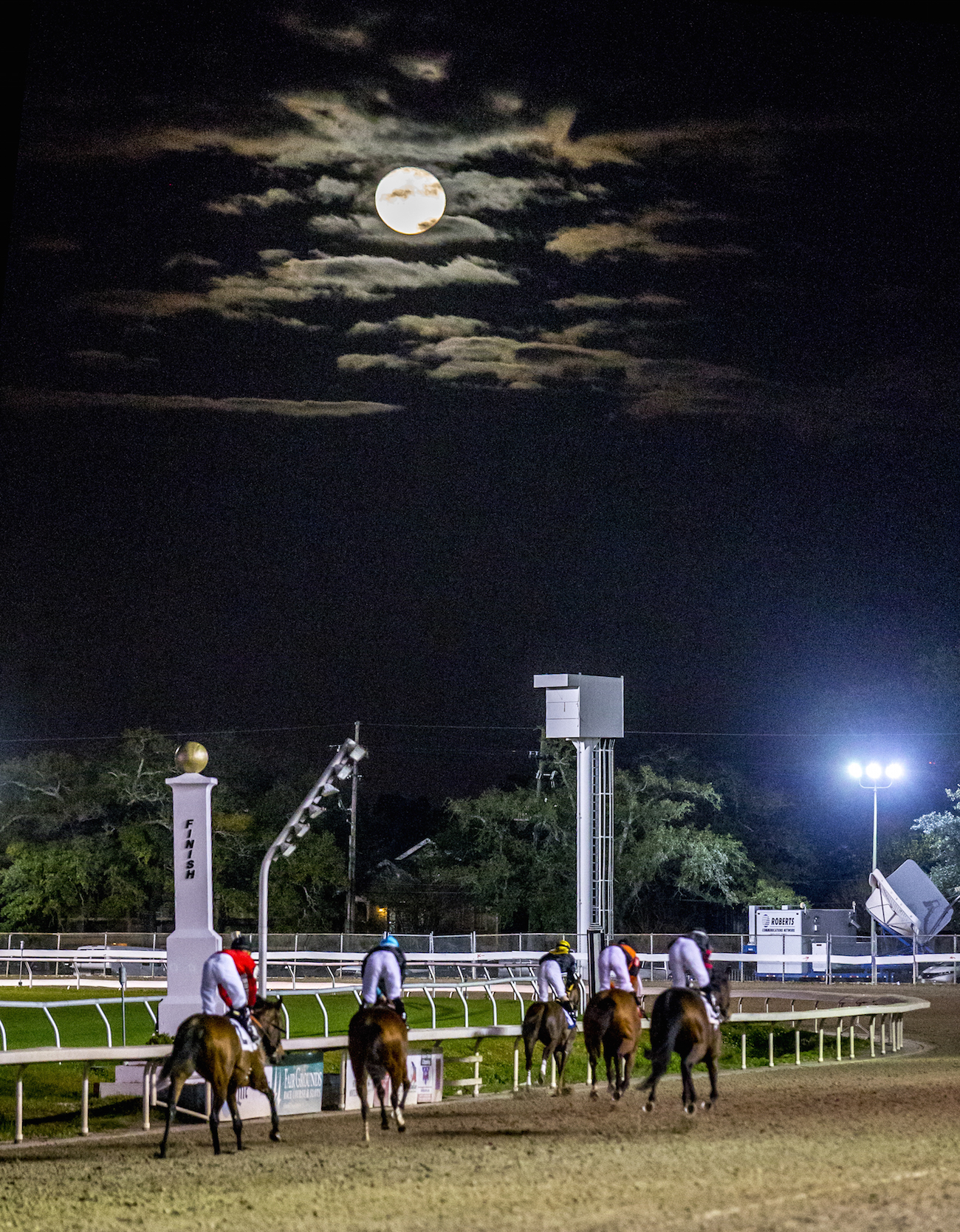
Identification, at the time, was through photographs of the ‘night eyes’ — the small, hairless patches on horses’ legs that are like fingerprints - no two are alike. Hodges was a natural for the job with his Army background.
“He then began working with the official shooter who was elderly,” said Hodges.
After graduation from college in 1970 and then three years in the army, Lou went to work full time with his father, shooting the Fair Grounds and Chicago meets. Prior to that, he assisted his dad for 11 years in the 1950s and early 60s.
As anyone who has been around Thoroughbred horses knows, the unpredictable can happen. The wildest scene Hodges ever saw involved one of racing’s greats. It was John Henry’s win in the inaugural Arlington Million. “They set up a special winner’s circle for him on the turf course with a background pulled in by a tractor. The horse [legendarily cantankerous if not outright dangerous] “was nuts. John Henry was like, ‘I did my job. I don’t want to do this.’ He was spinning all around and acting crazy and it was just quite a wild scene. We didn’t get a very good picture of him in the winner’s circle. Somebody was about to get hurt.”
What Hodges remembers most vividly was a woman crossing a boggy dirt track to the turf course losing a shoe. “The mud pulled her shoe off her foot. I don’t think she ever found it.”
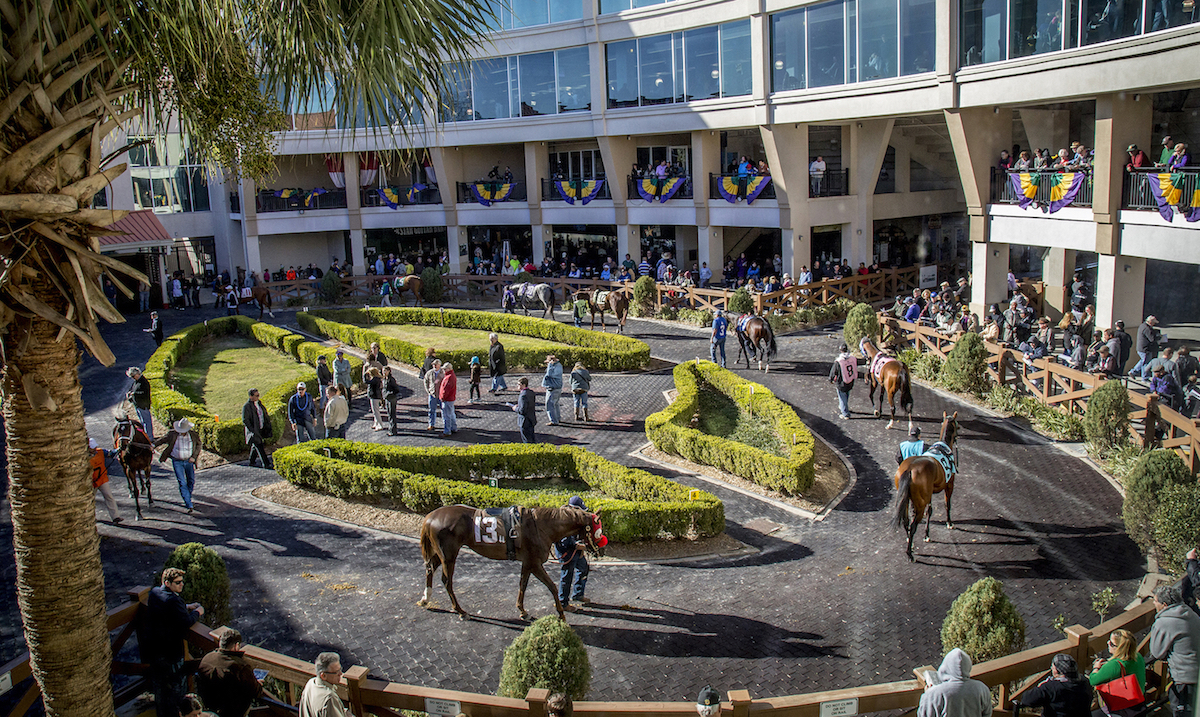
The strangest request is one Hodges has heard more than once. “I’ve had people who wanted me to take weight off of them. It’s happened with a few women. ‘Can you make me thinner?’” Hodges’ response is classic: “That’s not the kind of business we are in.”
That’s not to say Hodges has never retouched a photo. “I had somebody who wanted me to add him to the picture. He was an owner who couldn’t be here, so we actually cut him out of another picture and put him in.”
The one request never made of Hodges but of another photographer (most likely by an unscrupulous owner looking to sell a horse) was to shave time off the winner’s time printed on the winner’s circle shot.
Hazards for Hodges have come, surprisingly, outside the winner’s circle.
“I was at Arlington Park shooting a harness meeting in the winter and it was below zero,” he recalled. “I stepped out on the racetrack surrounded by ice under my feet and I go down. Boy it hurt. The horses are still coming around and I get up and I immediately crash again. And the horses are now into the stretch. So I get up the third time and, as they are approaching the finish line, it’s crash, I’m back down again. So, I said, I’m not even going to try. I just let them go by. I gave up.”
Winner’s circle photography is probably more difficult than Hodges makes it sound, but speed is of the essence — getting the horse, trainer, groom, and owners and their guests into and out of the enclosure for the photo as quickly as possible.
“We really don’t have a lot of time with a hot horse. At Louisiana Downs, we have days where it’s over 100 degrees [F]. The horse comes in and you gotta’ get the picture … get the horse out of there and cooled off. We don’t want to see a jockey get tossed.
“Some people come in the winner’s circle, and they haven’t been around horses much, and they think of it almost like it’s a portrait studio.”
Hodges gets one shot and one shot only at getting it right. “It’s not portrait photography. If the camera malfunctions, you can’t say, ‘hold that right there,’ and grab another camera or another lens. It’s over. There are no do-overs with sports photography.”
Malfunctions, particularly given thousands of photos, are unavoidable. “There aren’t any really bad malfunctions to come to mind, but we’ve had them.
“We use smart digital cards, and you can have a card malfunction the same as a faulty roll of film. You think you’ve got everything good, and you put the card in the computer and nothing is there. That’s happened a few times.”
Favorite horse
Perhaps surprisingly, winning owners without a shot to frame for their den, living room, or office are generally very understanding, according to Hodges, especially, as he adds, “if you’ve given them enough good pictures over the years.”
A ‘horse malfunction’, of a sort, led to a particular horse becoming Hodges’ favorite. The race was the 2009 Kentucky Derby and one horse etched himself into history as much for his slow start as his finish. “Reed Palmer, Churchill Downs photographer at the time, asked me to get a picture that Churchill always likes: The horses coming around the first turn, the grandstand, and the Twin Spires.”
After shooting it, Hodges was to move to the head of the stretch to shoot a head-on of the run to the wire with a long lens. After getting the first-turn picture, he ducked under the rail to hurry down on the track for this next shot. “I get the picture and I go under the rail to run down, and, as I’m coming up, I see this horse coming along. I was thinking, ‘I really feel bad for this horse. This is awful.’ He was like 20 lengths off [19 lengths officially in the Derby chart].
“I shot the finish and then I realize it was the same horse, Mine That Bird.”
Jockey Calvin Borel’s Louisiana roots added to Hodges partiality to the 50/1 shot that shocked most bettors and the racing world by winning the Run for the Roses. “Calvin came up the rail and just shocked everybody. He didn’t panic and knew exactly what he was doing.”
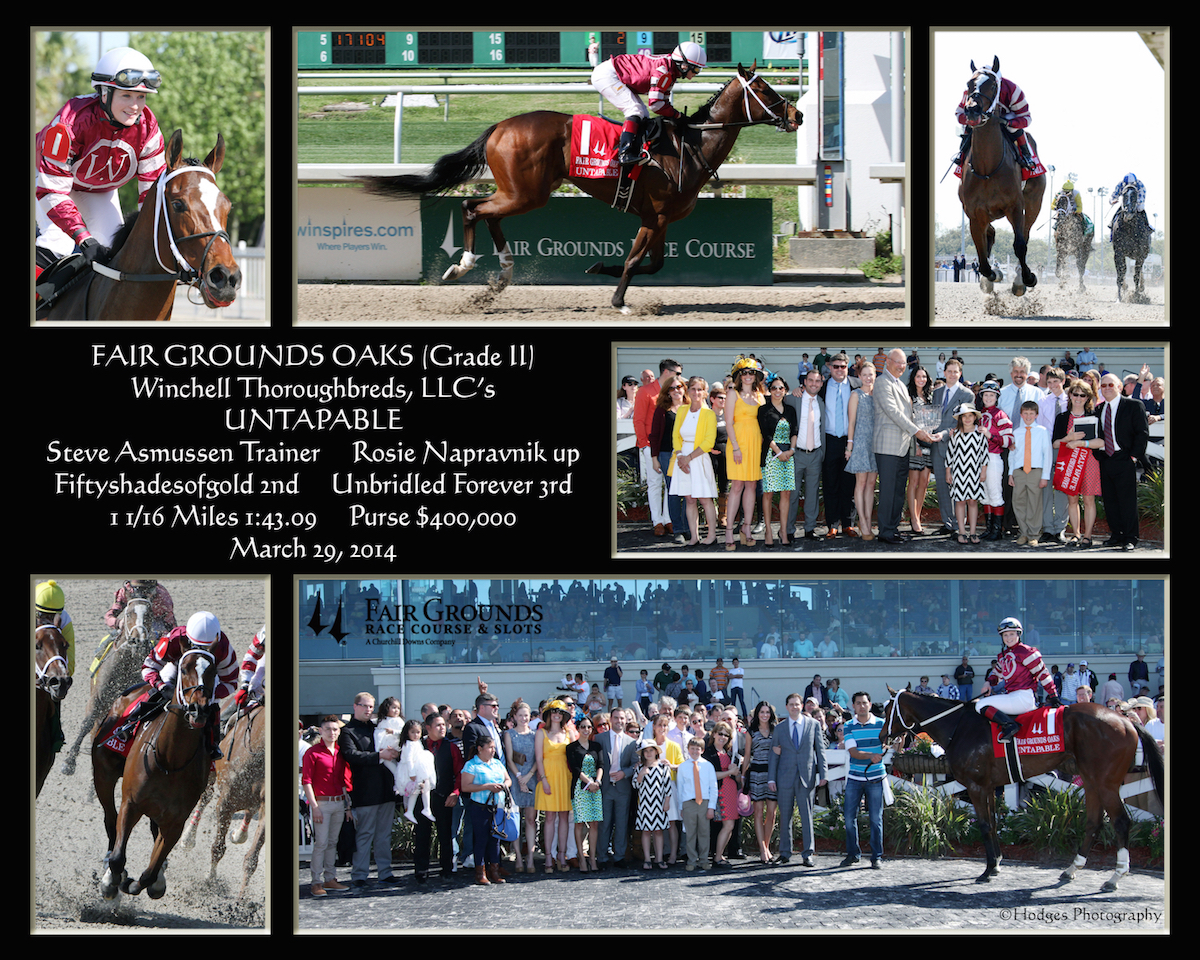
Content in racing photography hasn’t changed, but technology and the enhancements it offers has enabled Hodges to produce a better product, he said.
Digital photography replaced film for Hodges beginning in 2000. “Some people had already been doing it [using digital], but their pictures looked like what they had been doing with film. They just had a finish and a winner’s circle and some text in the middle. You’d look at them and think there was nothing special.
“You do a composite today of a stakes race and you might have five or six pictures. Back in the film days, to put that many pictures on one sheet of photographic paper, five of the six might be perfect and one of them might be too dark, maybe. You’d have to start all over. With digital, you’re looking at it on the screen and you’re making your adjustments before you have to make a print.
“With today’s new cameras, you can shoot with lower light. Our night pictures, I think, are some of our best pictures. It wasn’t always that way.”
Of course, digital offers speed in turning around prints ready for framing impossible with film. Owners of a winner at the Fair Grounds can duck into Hodges’ office just off the path from the paddock to the track as soon as an hour later to pick up prints. Before, with film, a winner’s circle composite would not have been available till the following day.
With the long history of the Hodges family at the Fair Grounds, is there another waiting in the wings to carry on a legacy with track photography?
“My older daughter, Amanda, is very good,” said Hodges. “She works with me now just on big days and she’s finishing up nursing school. She’ll continue working at the track whenever possible.”
Could she become a full-time replacement for her father? Indulging, perhaps, in wishful thinking, Hodges replied, “If there’s way she can manage that and still do a nursing career …”


